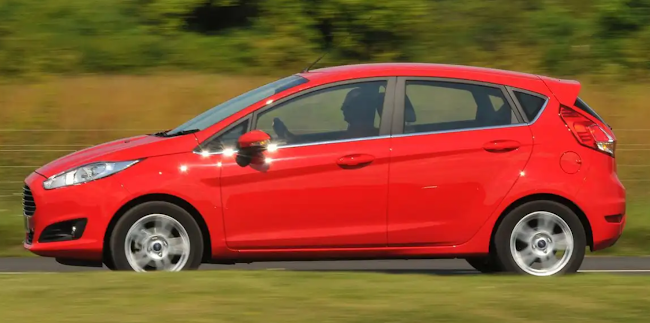10-Point Vehicle Check To Do Before Travelling
Holiday travel is fraught with enough hassles from roadworks, crazy fuel prices and reckless drivers that a car breakdown should be far from your thoughts and eliminated entirely.
Whether you are travelling this festive season or simply enjoying time at a local winefarm with your family, these checks will provide added peace of mind.
Related: Car giving you trouble - check out cars for sale available at dealers in Gauteng or nearby.
The entire process, available at dealers that sell cars for sale Gauteng drivers trust, has been designed to be convenient and to take less than 30 minutes to complete. At the end of the vehicle check-up, the customer will receive a detailed, obligation-free assessment, highlighting any area that needs attention.
It is important for everyone taking to the roads regularly or long distance, to make sure your vehicle is in safe running condition. Travelling long distances can place added strain on various engine, cooling, suspension, and brake components. The following areas of your vehicle should be inspected:
1. Fluids (Oil and Coolant)
An under-the-bonnet check is first on the list. Fluid levels are one of the main concerns motorists need to be aware of. If your coolant and oil levels are low, your vehicle might have a leak somewhere.
The pre-trip check-up also examines the brake fluid, which is the hydraulic fluid that the system uses to apply pressure to your brakes. If this level is too low, your car is not safe to drive.
2. Lights
You need to ensure that all your car’s lights are always working correctly – both so you can see and can be seen. This is a simple but important test.
Test that all the lights on the vehicle are working correctly. This includes the headlights, daytime-running lights where applicable, brake lights, reverse lights, and all indicators.
3. Wipers
December is the rainy season in many parts of South Africa, so it’s important to make sure that your wipers are in perfect condition.
The test is simple – are the wipers clearing the water from the windscreen, or are they leaving lines of water that impair your vision? Before setting out, use the windscreen washers to spray the windscreen and then check if the wipers are doing their job.
4. Wheels and Tyres
Tyres are perhaps the most important part of your vehicle, and with tyres not getting the normal mileage and rotation because of circumstances, one needs to be extra vigilant.
Tyre life and quality is determined by making sure that there is still the legal amount of tread depth left on the tyres. The legal limit is 1mm of remaining tread depth, or 1,6 mm if the tyre has an embedded tread wear indicator – although it is recommended to change your tyres with around 3 mm of tread remaining, otherwise your vehicle is at much higher risk of aquaplaning or not stopping effectively in wet conditions. Tyres should also be regularly checked for other signs of damage like bubbles, surface cuts or uneven wear.
It is important for motorists to check their tyre pressure regularly, even if they are not on a road trip. If a tyre is over inflated, it will wear in the middle of the tyre, and if it is underinflated, it will wear on the sides and edges and may overheat and fail while travelling at speed – with potentially life-threatening consequences. Both kinds of wear can also cause braking, noise, vibration, and wheel alignment concerns.
A check-up should also include checking the wheel bearings. Worn wheel bearings can cause vibration in the wheels and wheel alignment issues.
5. Brake Pads
Another critical component to consider is brake pad wear. Once the pad wears down below its minimum thickness, Ford will advise that the pads need to be replaced so that the car’s best braking performance can be achieved. The handbrake should also be checked to see if it is working and adjusted correctly.
6. Leaks
The under-the-hood checks of the fluid levels will include a thorough examination for visible oil spots or coolant leaks that might be dripping onto the ground. Coolant can be identified by its shiny texture that looks resembles oil.
7. Drive Belts
While underneath the vehicle, a technician will check the drive belt for any cracks. If the drive belt is damaged, worn, or breaks, it can cause a complete engine shutdown and damage.
8. Spare Wheel
A simple yet essential check that you can do yourself before tackling any long journey is checking to see if your spare tyre, the jack and spanner are all present in your vehicle and if they are in working order.
You also want to make sure that your spare wheel has a properly inflated tyre on it. Chances are you have not had to use it in a while, so check the pressure before setting off – you don’t want to be stuck on the side of the road in the middle of the Karoo with a flat spare wheel.
9. Steering
Some tests can only be done under driving conditions. Qualified technicians can pick up certain concerns that the everyday driver may miss, including engine sounds, vibrations, and suspension issues.
For the steering check the car will be driven on the road and see whether the steering pulls in a certain direction.
This could indicate a wheel alignment problem. Excessive dipping in the front or rear of the vehicle when accelerating, braking, or driving over a bump in the road may indicate that the shock absorbers need replacement, as this severely impacts the overall handling and safety of the vehicle – especially when heavily laden.
10. Brakes
While the brake pads are checked when the car is stationary, it is important to evaluate how the vehicle reacts to braking when driving – whether it pulls to either side under braking. It is unsafe to drive a vehicle that can’t be controlled effectively under braking.
Also see: Your next car - secondhand cars now available online.
.
.
.
.
Info sourced from https://at.tumblr.com/tenacioususedcars/10-point-vehicle-check-to-do-before-travelling/z0y3px08ypug


Comments
Post a Comment